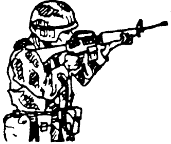*** Read This First ***
We appreciate the Orders and good words out there from yall
Due to the current volume of calls we are getting back to folks as best as we can. General Questions are all covered here on the home page of our site. Tech Questions are covered in the TM Manual.
We Manufacture our own parts thus we are never out of the ARIZONA REGULATOR.
Mail In Orders and AZR Authorized Dealer Orders are covered before we add units to the site for click and buy.
Mail In Orders Status - Mail in orders picked up Fri 12-26 shipped by end of day Wed 12-31. AZR Dealer Orders for the week shipped by end of day Wed 12-31.
Click Buy Orders ship within a couple work days from the day you placed the Order.
AZR Mail in program and AZR Site click buy are for normal private individuals only.
*** NO COMMERCIAL ORDERS ***
*** RESALE IS RESTRICTED TO AZR AUTHORIZED DEALERS ONLY ***
Remember AZR Authorized Dealers do things the same way we do it here at the Factory. None of us will take money from you when we do not have units to hand you or ship within a couple days. This is part of the commitment I made to America when I created the AZR-15 Product Line.
See you in Valhalla
R/S
J.D,
*** AZR NEW YEARS INFO ***
Family and Holidays are important thus our workers will be on New Years Vacation from end of day Wed 12-31 until start of day Mon 01-05.
They buttoned up and shipped all the orders that were in process before leaving the building today Wed 12-31. This includes all Mail ins from last Fri 12-26 and AZR Dealers this week and the last round of click buy have all shipped.
Happy New Years Folks
Thank you for your support America
R/S
J.D.
We would like to thank PSR for the outstanding video above.
The man did one hell of a job running our AZR-15A1 COMBAT TRIGGER SYSTEM thru its paces for yall
ARIZONA REGULATOR
Americas Trigger™
AZR-15A1 - 100% Drop In
ARIZONA REGULATOR™
COMBAT TRIGGER SYSTEM
Includes:
Qty 1 - ARIZONA REGULATOR AZR-15A1 SYSTEM
Remove your FCG and Selector
Install the AZR-15A1 System
Done
No Gunsmithing - No Guesswork
Standard Mil-Spec FA BCG - 5.0+ oz buffer for 5.56 or 10.0+oz buffer for 9mm required.
Factory Preset ARIZONA REGULATOR. Drop in and run in Std Mil-Spec AR.
J.D. set this one up 100% Drop In and go for his Daniel Defense MK18.
AZR-15A1 3 Position Full Function Video
ARIZONA REGULATOR
Americas only Drop In FRT
Forced Reset Trigger Device
Federal Legal in accordance with the GOA victory in thier U.S. Supreme Court Decision Confirming Federal Legality of Single Function Of The Trigger
GUARANTEED PERFECT FUNCTION
IN ALL MIL-SPEC AR RIFLES AND PISTOLS WHEN YOU FOLLOW OUR SIMPLE INSTRUCTIONS
The ARIZONA REGULATOR Does it all - Singles - Multi Round Strings - Mag Dumps
Engineered and Tested for proper function in all Standard Mil-Spec AR Rifle and Pistol platforms.
The Industry Standard in
Function, Reliability, and Durability
What you need:
1. ARIZONA REGULATOR
2. Mil-Spec AR Rifle or Pistol
3. Mil-Spec FA BCG
4. Trigger Mil-Spec / MBT 2S
5. Buffer 5.56 = 5.0+oz / 9mm = 10+oz
WEIGHTS MUST RATTLE
It is that simple. No guesswork.
With our Standard Mil-Spec System
Follow J.D.s TM-AZR15 instructions for guarenteed perfect function and ultimate reliability in your Mil-Spec AR Rifle or Pistol.
100% American Made with American Materials
ARIZONA REGULATOR manufactures right here in Arizona.
J.D. wrote the G-Code / Tooled up the machines and ran the very first AZR-15 himself over at the R&D Shop.
Precision CNC Machined from solid bar stock.
Every order is on hand.
No backorders. No presales.
Orders Ship U.S.P.S. Priority Mail Flat Rate Box.
Secure card payments process thru Authorize.net.
Mail In Order Form Avail - Click Here
ARIZONA REGULATOR
TM-AZR15
Tech Manual - Click Here
Tech Questions that are not covered
on this site or in the Tech Manual
call 480.305.3236
- NO TEXT -
No dial a gunsmith with general questions covered here on this site. At that point for your safety we will refer you to your Local Gunsmith for hands on assistance.
If no answer leave number we will call back
More videos and info below
WE APPRECIATE THE ORDERS
IF AN ITEM YOU WANT IS TEMPORARILY NOT ON HAND
- MORE ARE IN PROCESS -
SINCE WE MANUFACTURE OUR OWN PARTS MORE UNITS ARE COMPLETED EVERY FEW DAYS - THE ITEM YOU WANT WILL RELOAD SHORTLY
NOTE - AT TIMES IT MAY TAKE A DAY OR TWO LONGER TO PROCESS AND SHIP YOUR ORDER DEPENDING ON WEEKENDS HOLIDAYS AND OUR CURRENT ORDER VOLUME
Federal Legal Nationwide.
State Legal in 36 States.
States we cannot sell or ship to due to State Restrictions.
CA, CT, DC, DE, FL, HI, IA, IL, MD, MN, NJ, NY, OR, RI, WA.
Shipping is 8 bucks via U.S.P.S. Priority Mail Flat Rate Box.
ARIZONA REGULATOR™
Americas Trigger™
Mil-Spec Reliability
And Durability
In All Conditions
Field - Garrison - MOUT
30,000 Rds Documented
Still runs like new
All rounds on one
ARIZONA REGULATOR
Freedom Ordnance has been running our unit in thier new 9mm Beltfed Upper

ARIZONA REGULATOR Betsy Ross III Flag is a Trademark of AZR
ARIZONA REGULATOR CONSTRUCTION
Precision CNC Machined from Solid Bar Stock
High Strength Aluminum Body
Heat Treated Tool Steel Cams
Mil-Spec Stainless Steel Axis Pins
3000 PSI Rated Buffer
AZR-15M2 - 100% Drop In
No Tools
ARIZONA REGULATOR
Includes:
Qty 1 - ARIZONA REGULATOR AZR-15M2
Qty 1 - Standard Mil-Spec Disconnector / Use if needed some disconnectors are not to correct Mil-Spec.
Remove From Factory Package
Open Receiver
Drop In AZR-15M2
Close Receiver
Done
No Tools - No Gunsmithing
Standard Mil-Spec Trigger - FA BCG - 5.0+ oz buffer for 5.56 or 10.0+oz buffer for 9mm required.
Factory Preset ARIZONA REGULATOR. CNC Machined Method 2 Setup. Drop in and run with Mil-Spec Trigger in Std Mil-Spec AR.
J.D. set this one up 100% Drop In and go for his Daniel Defense MK18 with Mil-Spec Trigger.
AZR-15 - The Original ARIZONA REGULATOR
Includes:
Qty 1 - ARIZONA REGULATOR AZR-15
Qty 1 - Marked Mil-Spec Disconnector / Remove material to marked line for Method 1 Setup / use if needed for Setup 2 some disconnectors are not to correct Mil-Spec.
Engineered to work in all standard Mil-Spec AR Rifle and Pistol platforms - Lowers with high shelf, low shelf, no shelf, narrow pocket, wide pocket, M16 pocket - Uppers with oval pocket on underside - NO COLT BLOCK IN LOWER
Works with Mil-Spec or LaRue MBT or **REDACTED**.
Able to use in multiple guns. Universal within the Mil-Spec AR platform. Set up your AZR-15 the way you want it. Full Tech Details - Click Here.
ARIZONA REGULATOR is Veteran Marine Owned and Operated. 100% Made in America with American Materials.
We appreciate your support of ARIZONA REGULATOR. J.D. Invented the AZR-15 FRT so he could spread 2A Freedom to We The People. You can expect the same quality and service from us here as we have provided everyone for years with our other Parts Company ORIGINAL PRECISION.

Semper Fi
R/S
J.D.
See You In Valhalla
The ARIZONA REGULATOR
is also availible cash and carry at Local Gun Stores and Gun Shows Nationwide.
Ask for the ARIZONA REGULATOR by name at your Local Gun Store. They may have them behind the counter. We name the ones whom want to be published on our site.
** ATTN ** MICHAEL CARGILL AND CENTRAL TEXAS GUNWORKS HAVE BEEN TERMINATED FROM THE AZR DEALER PROGRAM
THIS IS DUE TO THEM PARTAKING IN UNAUTHORIZED PRESALE/BACKORDERING AKA TAKING MONEY FROM CUSTOMERS AND NOT HAVING PRODUCT ON HAND TO PROVIDE TO THE CUSTOMER
UNAUTHORIZED PRESALE/BACKORDERING IS STRICTLY PROHIBITED AS PER THE AZR DEALER AGREEMENT
IF YOU ORDERED FROM THEM AND HAVE NOT RECEIVED YOUR ORDER YOU WILL NEED TO CONTACT THEM FOR A REFUND OF YOUR MONEY AS THEY NO LONGER HAVE ACCESS TO THE AZR PRODUCT LINE DUE TO THIER BREECH OF AZR DEALER TERMS
ONCE YOU HAVE THE REFUND RECEIPT FROM THEM EMAIL THE RECEIPT OVER TO US 2A@ARIZONAREGULATOR.COM
WE WILL GET YOU TO AN AUTHORIZED DEALER THAT HAS UNITS ON HAND AND WILL GET YOU TAKEN CARE OF ASAP
AZR IS PAYING USPS EXPRESS SHIPPING ON ALL OF THESE EFFECTED ORDERS
R/S
J.D.
The ARIZONA REGULATOR AZR-15 is a Revolutionary Out of Battery Safety for the Semi-Auto AR Rifle and Pistol Platforms.
Federal Legal Semi-Auto FRT Trigger function is accomplished by the use of a new technology known as multiple interface camming action. This new and unique action provides an ultra smooth function along with perfect timing engineered in. The end result allows for a full range of function and seamless feel when shooting your AR platform rifle or pistol in any situation.
The ARIZONA REGULATOR regulates one shot per single function of the trigger which allows you to have a lot of legal FRT Trigger fun with your AR rifle or pistol. The ARIZONA REGULATOR is designed, engineered, and intended to eliminate the ability for your AR to fire Out of Battery. It works via the BCG engaging the mechanism when the bolt is out of battery. When the bolt returns safely into battery the BCG disengages the mechanism allowing you to physically function the trigger again to fire the next shot.
The ARIZONA REGULATOR by means of its unique U.S. Patent Pending Design and Engineering still allows the hammer to interact with the disconnector as is normal in a Semi-Auto firing cycle and makes the trigger reengage the hammer between shots thus increasing overall safety of the firearm while requiring you to maintain a Federal Legal Semi-Auto cycle of the trigger for each shot you fire. Faster than a Bump Stock and different than an FRT Forced Reset Trigger.
The ARIZONA REGULATOR is a direct engagement system that is constructed of aircraft grade aluminum with heat treated tool steel cams, Mil-Spec stainless steel axis pins and an aerospace grade top cam buffer. The engineering and construction gives the ARIZONA REGULATOR a robust function and ultimate reliability. Long term durability and reliability is our number one priority.
The ARIZONA REGULATOR is fast and easy to put in and take out of your AR rifle or pistol making it a very handy part of your kit to say the least. Once setup simply pop rear take down pin, tip open receiver, put ARIZONA REGULATOR in, tip receiver closed, push rear take down pin back into place.
This makes the ARIZONA REGULATOR the best solution as it differs from a traditional FRT Forced Reset Trigger pack or any other FRT like item. Unlike a traditional FRT Forced Rest Trigger pack or FRT like item you do not need to carry tools and extra parts to change out when you want to use it or to take it out when you don't want to use it. Giving you the ultimate in flexibility to fit your needs.
The ARIZONA REGULATOR does not change the external appearance of your AR platform rifle or pistol. It pops in and out in seconds with no tools required at the range or in the field. When you do not want to use it you can put it in your shirt pocket and easily put it back into your AR when you want to use it.
The ARIZONA REGULATOR was Invented, Engineered, and Developed by J.D. of Original Precision. J.D. is a U.S. Marine Corps Veteran with over 25 years Machining Experience, and has been in the gun parts market since 2017 when he released his World Famous LOCK DELETE for Smith & Wesson Revolvers followed by the release of the CCW HD Moon Clips for S&W J-Frame 38/357 Revolvers which are renowned in the Snub Nose Carry and Competition circles.

The U.S. Supreme Court has confirmed what We The People already knew by reading the plain text of the Law when it comes to Forced Reset Triggers.
Each time the trigger moves and releases the hammer, that is a single function of the trigger. As well as the requirement of manual movement of the trigger to release the hammer does not satisfy the definition of automatic.
The ARIZONA REGULATOR does not make the gun automatic nor does it allow you to fire more than one shot per single function of the trigger.
The required conditions of the Federal Law for something to be a machinegun, "automatically" and more than one shot "by a single function of the trigger" are not met by the ARIZONA REGULATOR.
Both conditions, "automatically" and more than one shot "by a single function of the trigger" must be met for something to be a machinegun.
Therefore the ARIZONA REGULATOR is not and cannot be a machinegun in accordance with the U.S. Supreme Court and Federal Law.
Staying within the Law as J.D. was inventing and developing the ARIZONA REGULATOR is what has allowed us to bring this Out of Battery Safety into existence so you can have Federal Legal Semi-Auto fun with your AR-15.

Some of the most important sections of the Landmark U.S Supreme Court decision are excerpted below.
We all owe GOA Gun Owners of America a debt of gratitude for fighting the good fight and prevailing in this monumentous case.
Consider becoming a GOA Member as the more of us there are the more we can all accomplish.
These sections confirm the ARIZONA REGULATOR is a Federal Legal Semi-Auto item.
It is all about how the ARIZONA REGULATOR Forced Reset Trigger Device Functions within Federal Law.
Page locations follow quote.
Full doc is well worth the read.
Click to read direct from U.S. Supreme Court site.
JUSTICE THOMAS delivered the opinion of the Court.
“an accessory for a semiautomatic rifle that allows the shooter to rapidly reengage the trigger (and therefore achieve a high rate of fire)— converts the rifle into a “machinegun.” We hold that it does not and therefore affirm.”
@ pg 1
“With a machinegun, a shooter can fire multiple times, or even continuously, by engaging the trigger only once. This capability distinguishes a machinegun from a semiautomatic firearm. With a semiautomatic firearm, the shooter can fire only one time by engaging the trigger.”
@ pg 2
“As always, we start with the statutory text, which refers to “a single function of the trigger.” . . . ; Webster’s New International Dictionary 2711 (2d ed. 1934) (“A piece, as a lever, connected with a catch or detent as a means of releasing it; specif., Firearms, the part of a lock moved by the finger to release the cock in firing”). The phrase “function of the trigger” thus refers to the mode of action by which the trigger activates the firing mechanism. For most firearms, including the ones at issue here, the trigger is a curved metal lever. On weapons with these standard trigger mechanisms, the phrase “function of the trigger” means the physical trigger movement required to shoot the firearm.”
@ pg 7
“is not a machinegun because it fires only one shot per “function of the trigger.” That is, engaging the trigger a single time will cause the firing mechanism to discharge only one shot. To understand why, it is helpful to consider the mechanics of the firing cycle for a semiautomatic rifle. Because the statutory definition is keyed to a “function of the trigger,” only the trigger assembly is relevant for our purposes. . . . When the shooter engages the trigger by moving it backward (as indicated by the arrow), the square point of the trigger pivots downward and out of the notch securing the hammer. Ibid. This movement releases the spring-loaded hammer, allowing it to swing forward. Ibid. At the top of the hammer’s rotation, it strikes the firing pin, causing the weapon to fire a single shot. See ibid.”
@ pg 7-8-9
“the hammer slips off the disconnector just as the square point of the trigger rises into the notch on the hammer (circled above). Ibid. The trigger mechanism is thereby reset to the original position shown in Figure 1. A semiautomatic rifle must complete this cycle for each shot fired. ATF does not dispute that this complete process is what constitutes a “single function of the trigger.” A shooter may fire the weapon again after the trigger has reset, but only by engaging the trigger a second time and thereby initiating a new firing cycle. . . . “Any additional shot fired after one cycle is the result of a separate and distinct “function of the trigger.”“
@ pg 11 - 12
“merely reduces the amount of time that elapses between separate “functions” of the trigger.” . . . “makes it easier for the shooter to” . . . “thereby release pressure from the trigger and reset it.”
@ pg 12
“This argument rests on the mistaken premise that there is a difference between a shooter flexing his finger to pull the trigger and a shooter pushing the firearm forward to bump the trigger against his stationary finger. ATF and the dissent seek to call the shooter’s initial trigger pull a “function of the trigger” while ignoring the subsequent “bumps” of the shooter’s finger against the trigger before every additional shot. But, §5845(b) does not define a machinegun based on what type of human input engages the trigger—whether it be a pull, bump, or something else. Nor does it define a machinegun based on whether the shooter has assistance engaging the trigger. The statutory definition instead hinges on how many shots discharge when the shooter engages the trigger. And, as we have explained, a semiautomatic rifle will fire only one shot each time the shooter engages the trigger . . . ”
@ pg 13
“But, Congress did not write a statutory definition of “machinegun” keyed to when a firing sequence begins and ends. Section 5845(b) asks only whether a weapon fires more than one shot “by a single function of the trigger.” “
@ pg 14
“ Section 5845(b) asks whether a weapon “shoots . . . automatically more than one shot . . . by a single function of the trigger.” The statute thus specifies the precise action that must “automatically” cause a weapon to fire “more than one shot”—a “single function of the trigger.” If something more than a “single function of the trigger” is required to fire multiple shots, the weapon does not satisfy the statutory definition.”
@ pg 14 – 15
“But, even if one aspect of a weapon’s operation could be seen as “automatic,” that would not mean the weapon “shoots . . . automatically more than one shot . . . by a single function of the trigger.” §5845(b) (emphasis added). After all, many weapons have some “automatic” features. For example, semiautomatic rifles eject the spent cartridge from the firearm’s chamber and load a new one in its place without any input from the shooter. See supra, at 10. A semiautomatic rifle is therefore “automatic” in the general sense that it performs some operations that would otherwise need to be completed by hand. But, as all agree, a semiautomatic rifle cannot fire more than one shot “automatically . . . by a single function of the trigger” because the shooter must do more than simply engage the trigger one time. . . . Thus, even if a semiautomatic rifle could fire more than one shot by a single function of the trigger, it would not do so “automatically.”“
@ pg 17
“So, ATF reasons, concluding that bump stocks are lawful “simply because the [trigger] moves back and forth . . . would exalt artifice above reality and enable evasion of the federal machinegun ban.” Id., at 41–42 (internal quotation marks omitted). The dissent endorses a similar view. See post, at 14–17. The presumption against ineffectiveness cannot do the work that ATF and the dissent ask of it. A law is not useless merely because it draws a line more narrowly than one of its conceivable statutory purposes might suggest.”
@ pg 18
“In any event, Congress could have linked the definition of “machinegun” to a weapon’s rate of fire, as the dissent would prefer. But, it instead enacted a statute that turns on whether a weapon can fire more than one shot “automatically . . . by a single function of the trigger.” §5845(b). And, “it is never our job to rewrite . . . statutory text under the banner of speculation about what Congress might have done.” Henson v. Santander Consumer USA Inc., 582 U. S. 79, 89 (2017). 9 III
For the foregoing reasons, we affirm the judgment of the Court of Appeals. It is so ordered.”
@ pg 19



